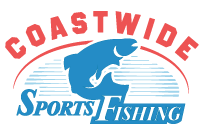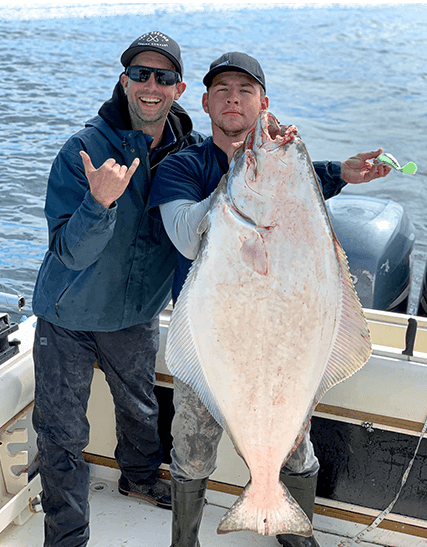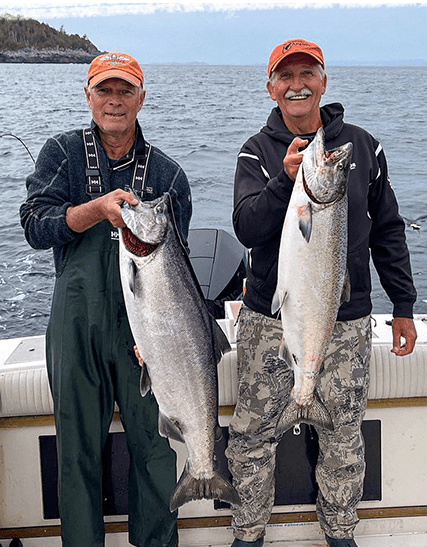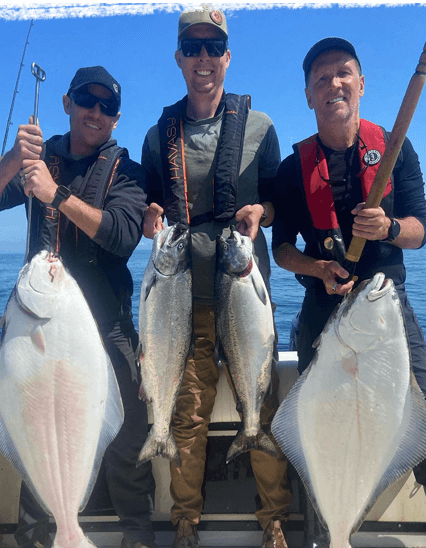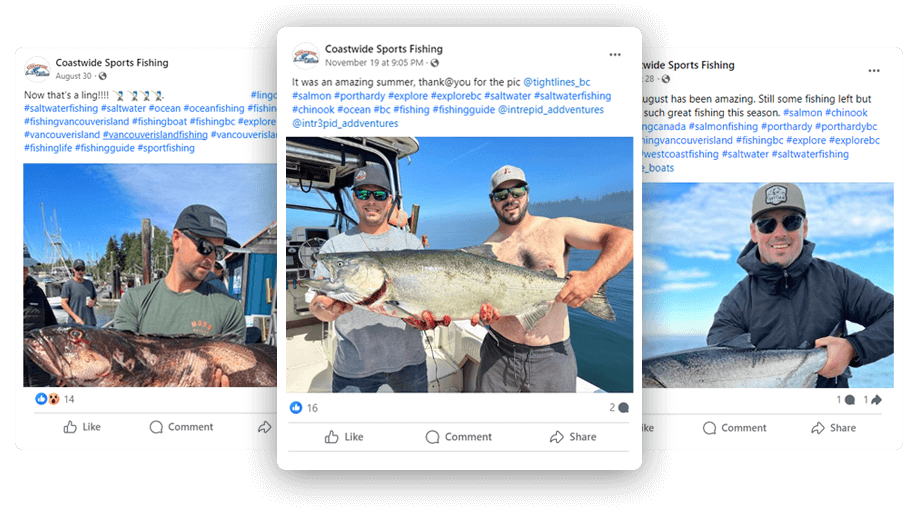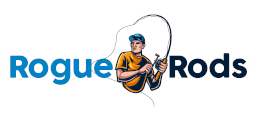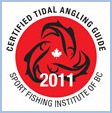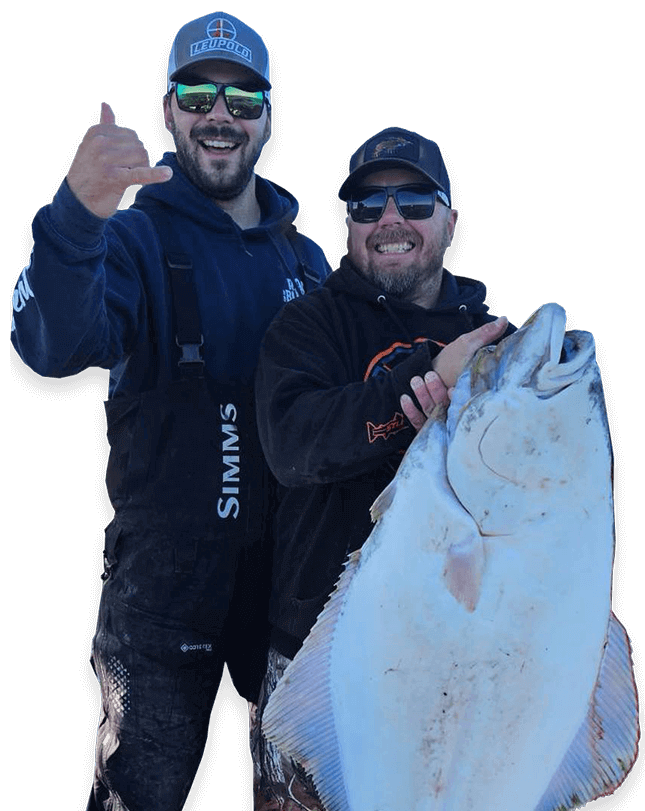
About Us
Welcome to Coastwide
Sport Fishing!
The waters surrounding Port Hardy, off the northern tip of Vancouver Island, possess some of the best fishing the British Columbia coast has to offer. Abundant migratory and local stocks of salmon, halibut, or bottom fish and miles of unspoiled wilderness guarantee a world class fishing experience.
Coastwide Sports Fishing Charters offers an all-inclusive package for anglers looking for the best saltwater sports fishing has to offer. Just a 4 to 5 hour drive from the Nanaimo Ferry Terminal, you will feel worlds away from the stresses of everyday life.
Charters at Coastwide Sports Fishing include your stay in Port Hardy, your meals, an experienced guide and boat and the packaging of your salmon or halibut. With all the details taken care of, fishing with Coastwide Sports Fishing Charters could easily become the fishing experience of a lifetime.
All you need to do is fish.
All you need to focus on is the fish on your line.
All you need to organize is the photo of yourself with your catch-of-a-lifetime salmon or halibut.
Expert Guides
Knowledgeable and experienced guides who know the local waters, ensuring a safe and successful fishing experience.
Family-Friendly
A welcoming environment for anglers of all ages, with family-friendly outings and the chance for kids to learn and enjoy the experience.
Seasons Planning
Expert advice on the best seasons for specific catches. The best time for halibut and ground fish would be May 15 – July 15. We help anglers plan their trips for optimal success.
Comfort & Safety
Emphasis on safety protocols, including well-maintained vessels, proper safety gear and experienced crew, ensuring a secure and enjoyable outing.
Reel Fishing Adventures
Unleashing the Best in Fishing Adventures
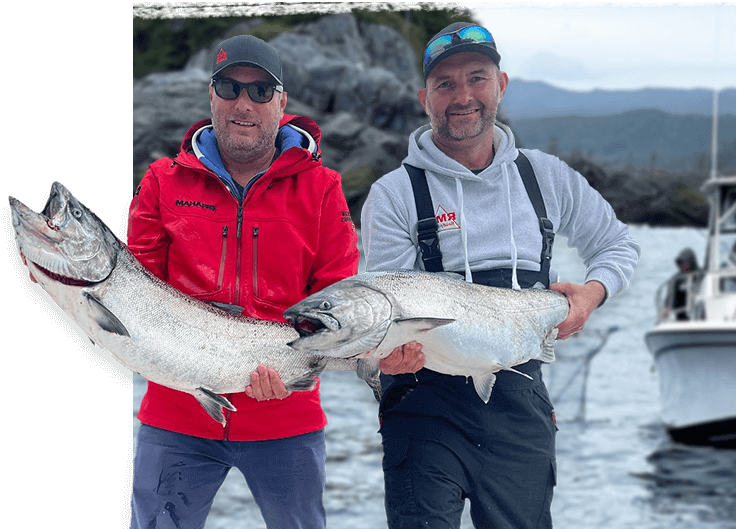
Testimonials
Stories from Our Fishing Trips
Wow! Who knew fishing could be so fun! The owner/operator of this charter took care of every detail and ensured we hauled in our limit of halibut and salmon. Watched whales, porpoises and otters surface from below while eagles circled above. Incredible experience from start to finish – returning home with a cooler of fish! Thanks Gibby and crew!
These are the best in Port Hardy!!! They have the best guides and equipment. They always get you to the fish!! We limited out on Salmon and Halibut in one day of fishing. It was truly amazing. Chad is great guy and runs a fantastic operation. If you are going fishing in Port Hardy, these are your guys!!
Fantastic 3 days of fishing with Wade last week. Chad’s Coastwide is a class act…great service, top-notch equipment, and superb local knowledge. We will be back…
Best saltwater fishing experience I’ve ever had. Love the fact that every day you get to catch salmon, halibut and bottomfish! Good boats, great guides, and a unique business model. Can’t wait to come back!
These guys are great, will definitely be back as soon as I can. My Dad, brother, and I spent three days fishing with our guide Bryan who was amazing and a lot of fun. Best guide/boat captain I have ever fished with.
Fishing with Chads was great since he takes care of the fishing, hotel, food, etc. The hotel Chad books is literally at the dock, awesome view and convenience! You show up to the boat in the morning and your lunch and snacks are already on board! After a long day of fishing they take the fish to be fileted and freezer packed, too easy.
Caught the biggest salmon and halibut of my life on this trip, and amazing lingcod too. Price was extremely reasonable especially after converting to US currency.
Would go fishing with any of Chads guides but will be asking for Bryan next time I come up!
Testimonials
